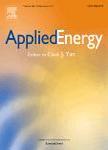版权所有:内蒙古大学图书馆 技术提供:维普资讯• 智图
内蒙古自治区呼和浩特市赛罕区大学西街235号 邮编: 010021

作者机构:Univ Wollongong Sustainable Bldg Res Ctr Wollongong 2522 Australia CSIRO Energy 10 Murray Dwyer Circuit Mayfield West NSW Australia Univ Wollongong Sch Comp & Informat Technol Wollongong 2522 Australia
出 版 物:《APPLIED ENERGY》 (Appl. Energy)
年 卷 期:2025年第383卷
核心收录:
学科分类:0820[工学-石油与天然气工程] 0817[工学-化学工程与技术] 08[工学] 0807[工学-动力工程及工程热物理]
主 题:Model predictive control Data-driven prediction Online learning HVAC energy consumption Indoor air quality
摘 要:This paper presents a novel data-driven Model Predictive Control (MPC) strategy to optimize the energy consumption of Heating, Ventilation and Air Conditioning (HVAC) systems by considering indoor thermal comfort and Indoor Air Quality (IAQ). The proposed MPC strategy used an encoder-decoder Long Short-Term Memory (LSTM) model with an online learning optimizer to predict the future energy consumption, IAQ, temperature and relative humidity (RH). A Multiple Objective Particle Swarm Optimization (MOPSO) method with an adaptive weighting strategy for various objectives was used to search for the best control solutions. The adaptive weighting strategy computes the future deviations of the building performance parameters to the reference values and compares them with the historical records to select the best solution in the Pareto Frontier identified by MOPSO to minimize the volatilities of the HVAC power consumption, IAQ and thermal comfort. The online learning method is used to continuously update the model parameters based on the prediction biases to improve the prediction performance. The performance of this method was tested through co-simulation using TRNSYS and Python to optimize the energy use, indoor CO2 concentration, air temperature and RH of a residential building. Experimental tests were carried out to validate the simulated pollutants variations in the building. The results showed that this MPC strategy can shift the cooling period to respond to pollutants concentration and thermal comfort simultaneously, while at the same time, minimizing the energy consumption of the HVAC system. By using the proposed strategy, the peak value of CO2 concentration was reduced by 23.2 % compared with a baseline feedback control strategy. The total energy consumption was significantly reduced by 10.2 % when the MPC strategy was used. The online learning optimizer reduced CO2 peak concentration by 10.4 % and energy use by 3.8 % when compared with the MPC strategy without us